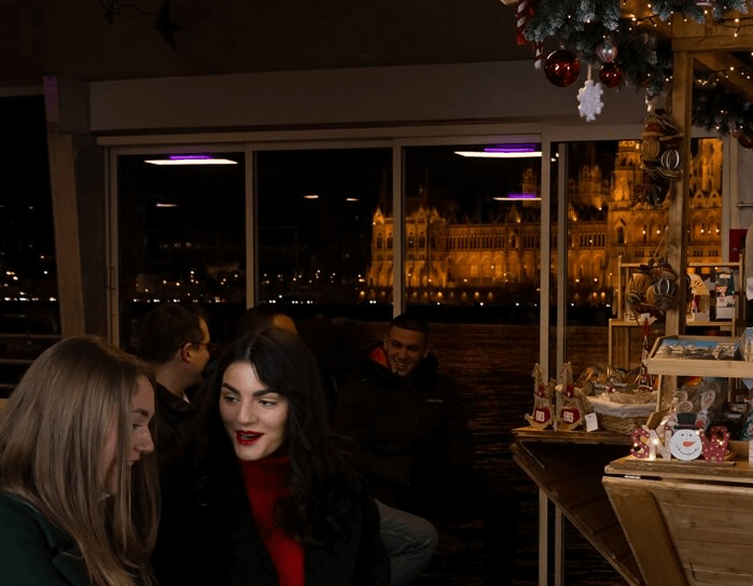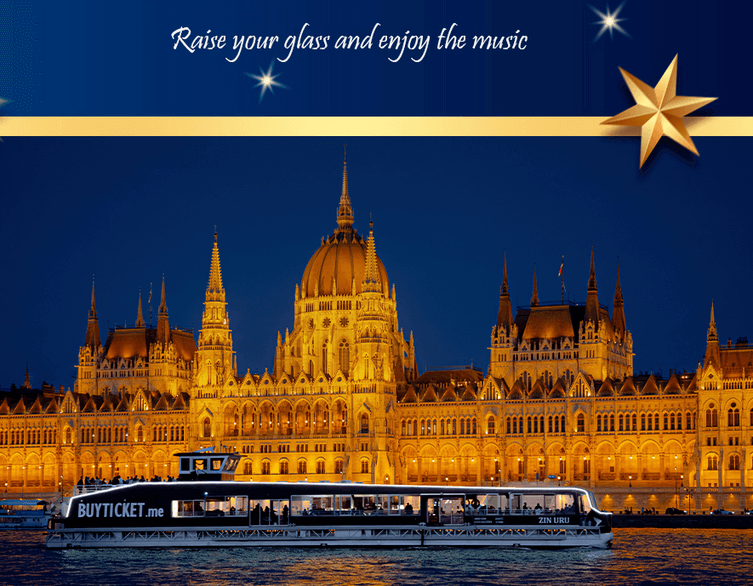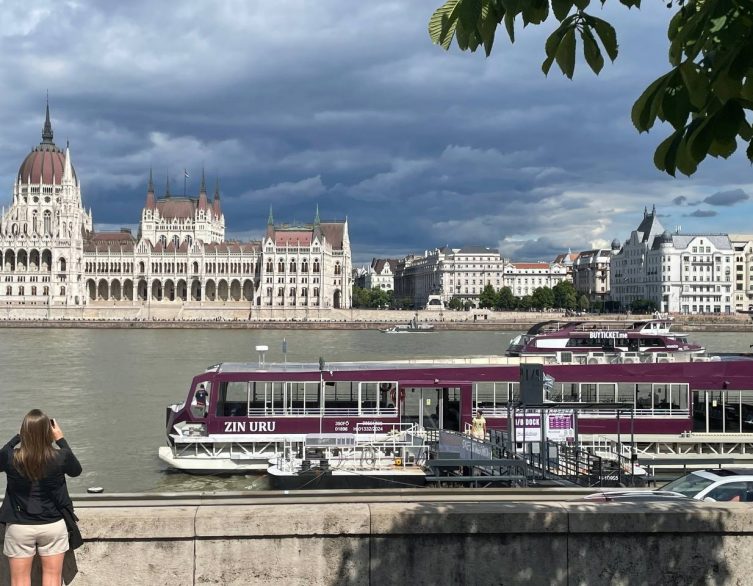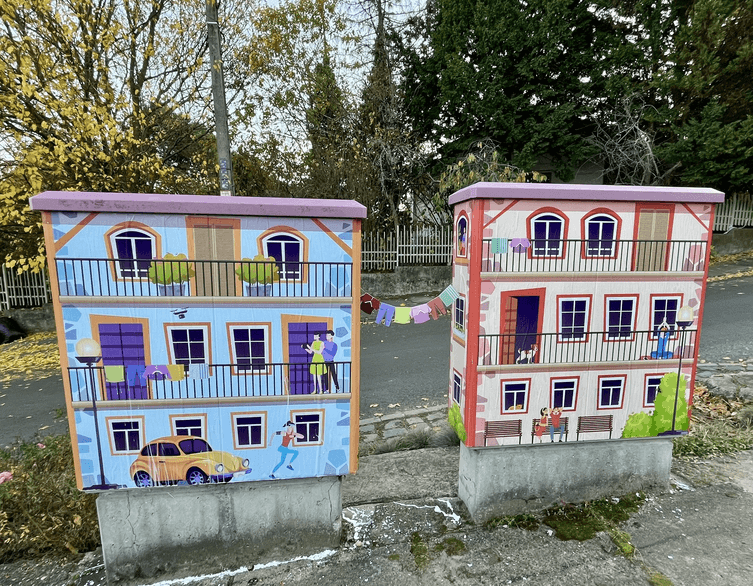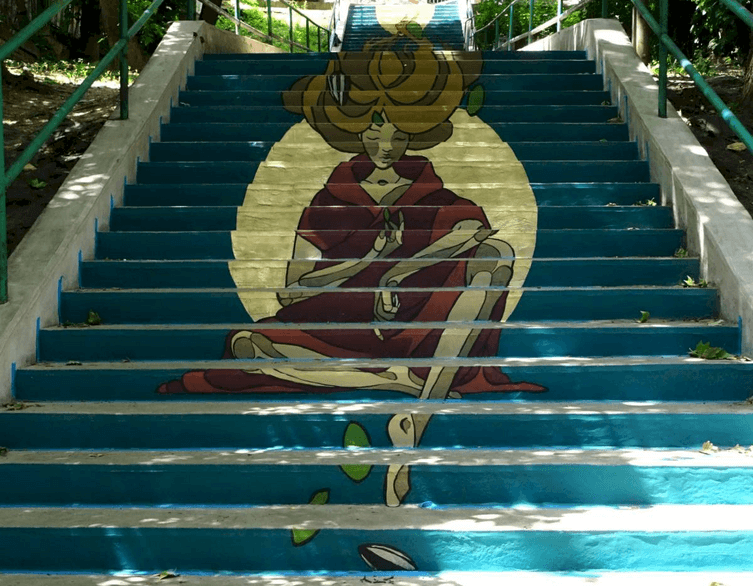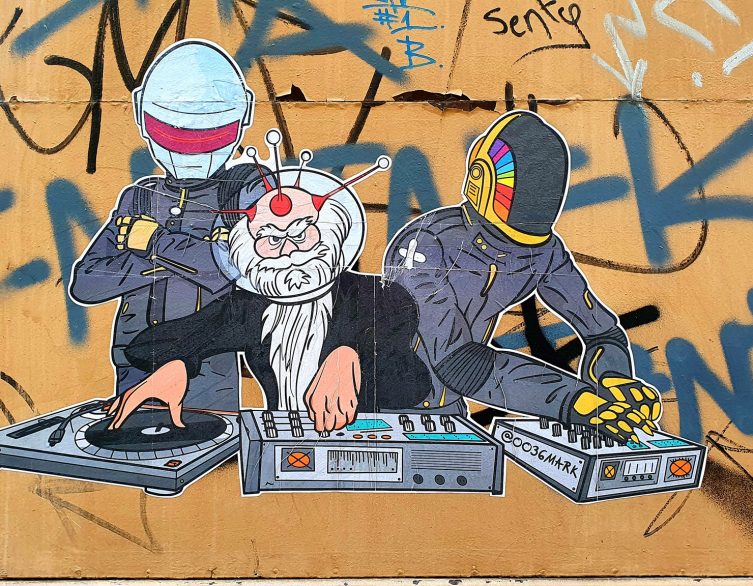New Street Art Brings Color to Budapest’s Historic Astoria Underpass
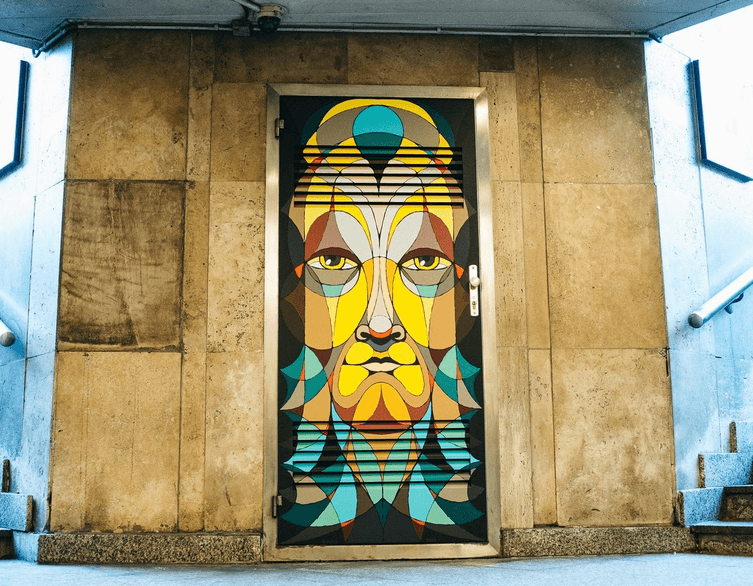
Budapest’s urban landscape just got a vibrant upgrade in one of its most unexpected places. The Astoria underpass, a bustling transit hub beneath one of the city’s busiest intersections, now features two striking street art pieces that transform the ordinary metal doors into eye-catching works of public art. Created by renowned Hungarian street artist VOID, these installations are part of the city’s participatory budget initiative supporting legal street art projects.
A Fresh Perspective on Underground Spaces
When you think of Budapest’s most photogenic spots, underground passages probably don’t top the list. Yet the Astoria underpass holds a special place in the city’s modern history. Opened in 1963, it was Budapest’s first modern-style pedestrian tunnel, and contemporary press coverage at the time praised its forward-thinking architectural solutions, complete with vending machines and shop windows. The reality, however, didn’t quite live up to the modernist vision, as the unconventional design suffered from poor execution.
Decades have passed since then, and while the underpass has retained its functionality due to the metro station, it had been crying out for a colorful transformation. Recent improvements through the participatory budget have already restored surface-level zebra crossings at their rightful locations after being removed decades ago, and now the underpass itself receives its artistic moment.
VOID’s Signature Style Underground
The first piece adorns a metal door on the District VIII side of the underpass. A vibrant face stares back at passersby, showcasing VOID’s instantly recognizable artistic signature. If you’ve explored Budapest’s street art scene, you’ve likely encountered similar faces throughout the city. One of the artist’s most famous works graces the gate at 12 Kazinczy Street, and these distinctive characters have become beloved landmarks across various neighborhoods. VOID’s colorful portraits have a way of bringing personality and warmth to unexpected urban spaces, and this latest addition continues that tradition.
A Tribute to Cinema History
The second door, located on the District V side, features something particularly special. Here, VOID reimagined the portrait of Aleksandr Sergeyevich Pushkin, the legendary Russian poet, creating a contemporary tribute that celebrates the 100th anniversary of the nearby Puskin Cinema. The portrait incorporates clever details that bridge past and present. The 3D glasses perched on Pushkin’s face reference modern cinema, while the white and gray labyrinth-like pattern in the background mirrors the underpass’s maze-like corridors and the perpendicular lines that define its architecture.
Best deals of Budapest
This artistic choice connects multiple layers of Budapest’s cultural fabric. The Puskin Cinema, named after the great poet, has been a fixture in the city’s film scene for a century, and this street art piece honors that legacy while anchoring it firmly in contemporary urban culture.
The Technical Touch
Both doors received their new looks through a vinyl sticker application technique rather than traditional painting. This practical approach served multiple purposes. The installation process was quick and efficient, minimizing disruption to the thousands of daily commuters who pass through the underpass. More importantly, this method ensures the artworks will be easier to maintain and preserve over time, protecting them from the wear and tear that underground spaces typically endure.
Finding Budapest’s Legal Street Art Scene
These Astoria pieces represent part of a broader movement in Budapest to create designated spaces for legal street art. The city’s participatory budget allows residents to propose and vote on community projects, and supporting legitimate street art has become an increasingly popular choice. This approach transforms potential vandalism into celebrated public art while giving talented artists like VOID official platforms to share their vision.
When you visit the Astoria underpass, you’ll find these artworks at the metal doors within the passage connecting the metro station to the street level. The intersection sits at the junction of multiple tram and metro lines, making it an easy stop during your Budapest explorations. Beyond these new pieces, the surrounding streets offer glimpses of Budapest’s evolving relationship between historic architecture and contemporary urban art.
The transformation of the Astoria underpass demonstrates how cities can reimagine utilitarian spaces as canvases for cultural expression. What was once merely a functional passage now offers a moment of visual delight during your daily commute or tourist wanderings through Budapest’s streets.
Related news



